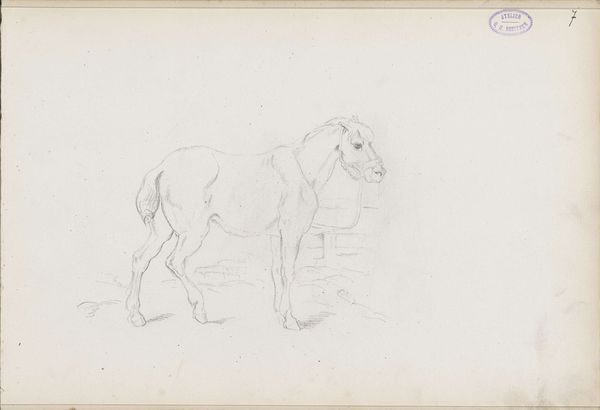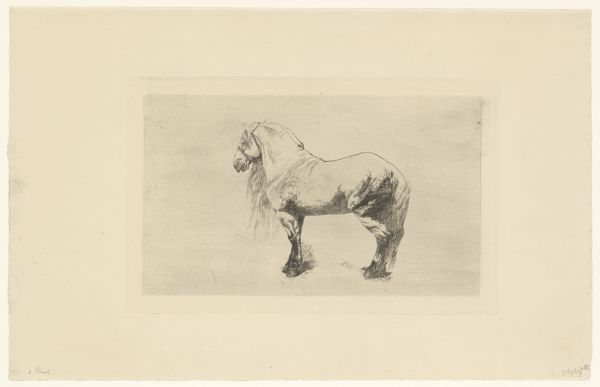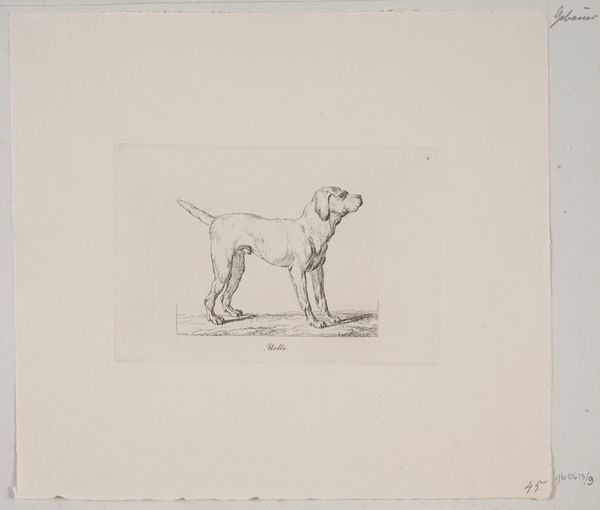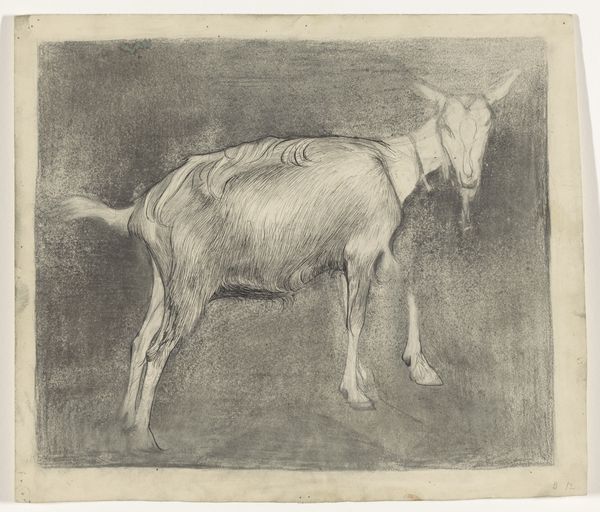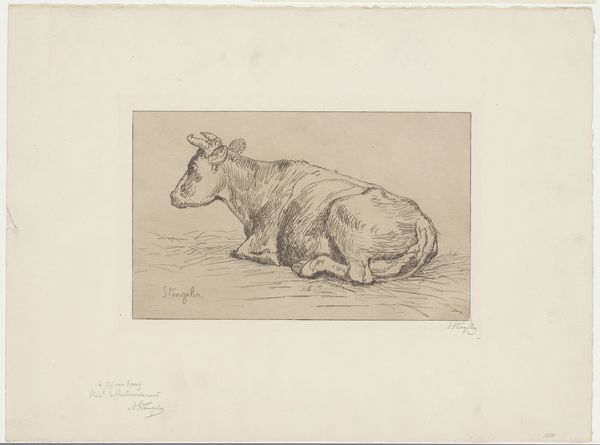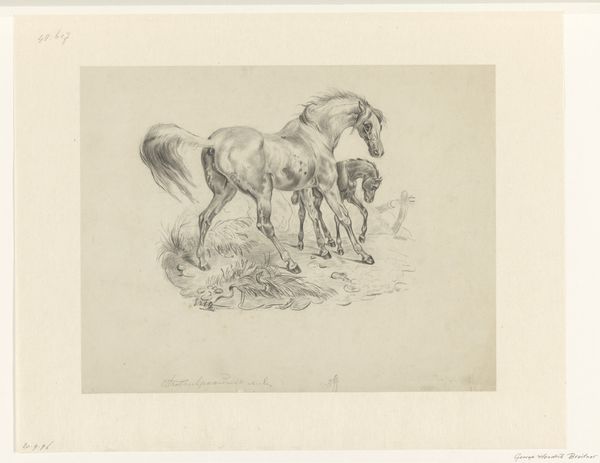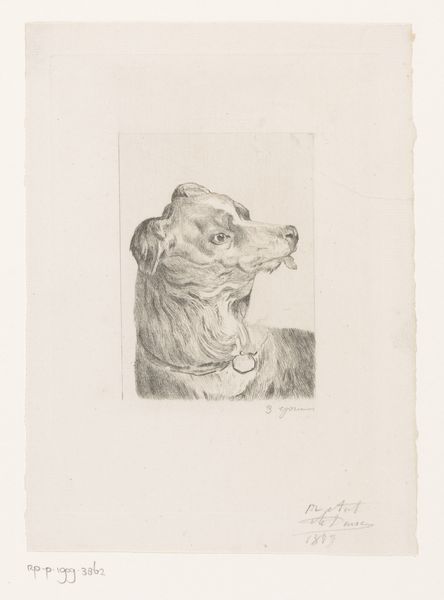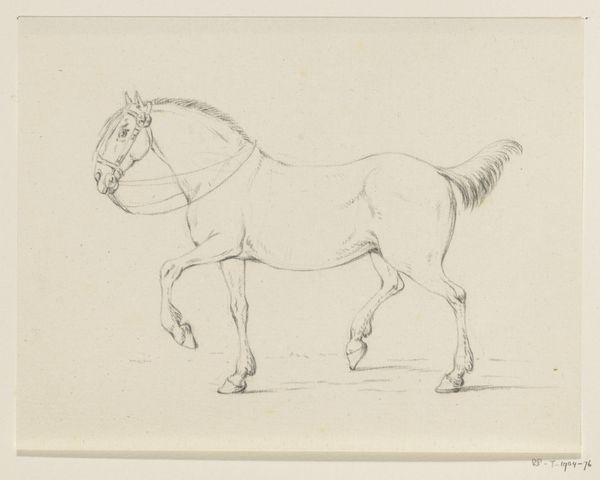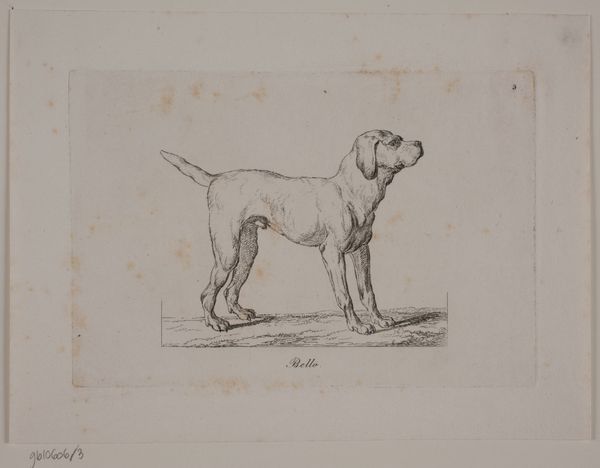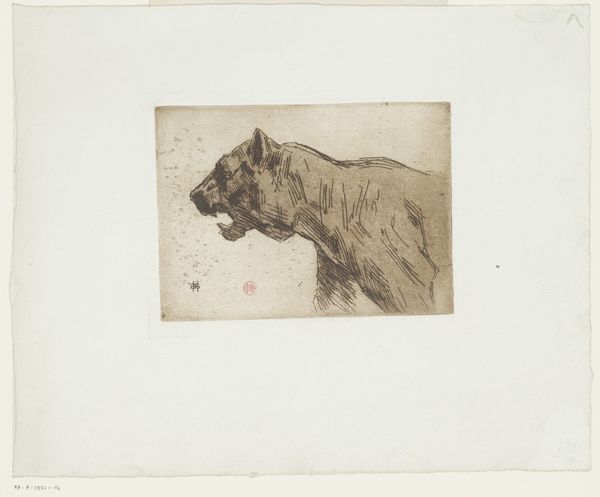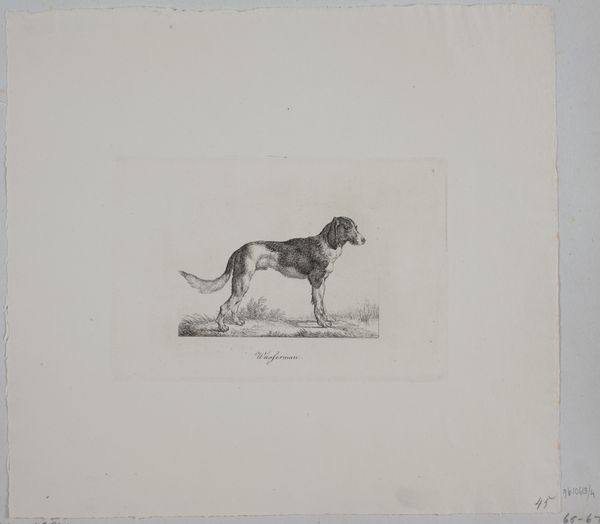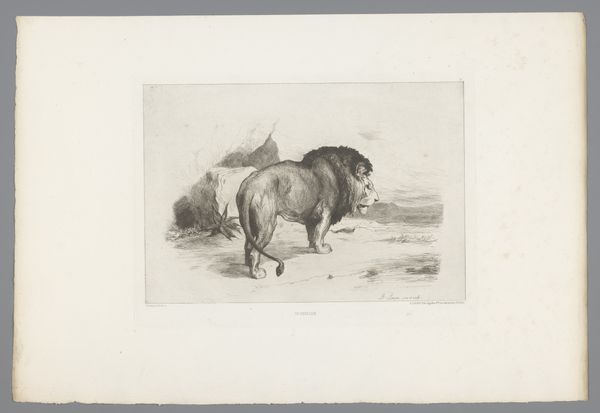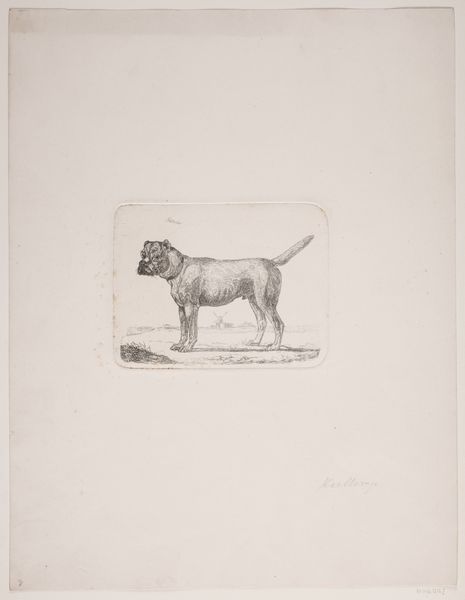
drawing, pencil, graphite
#
portrait
#
pencil drawn
#
drawing
#
animal
#
pencil sketch
#
light coloured
#
pencil drawing
#
pencil
#
graphite
#
realism
Dimensions: height 159 mm, width 227 mm
Copyright: Rijks Museum: Open Domain
Editor: Here we have "Paard," a pencil and graphite drawing of a horse, likely created sometime between 1864 and 1902 by Paul Parmentier. It's remarkably delicate. What can you tell me about it? Curator: It’s a simple drawing, but its power lies in its process. Consider the materials themselves: pencil and graphite on paper. These are relatively inexpensive and accessible. What does that say about art making at the time? Was it democratizing? Was Parmentier interested in representing this work horse in a way that dignified its labour? Editor: I never considered the materials as having social implications. Curator: Exactly! And look closer – see the light touch? It hints at the physical act of drawing itself. How might Parmentier’s economic status and available resources have informed his choices about materials and style? Editor: So, by focusing on the “how” of its creation, we get a better picture of art and its connection to everyday life. Do you think the lack of vibrant colors contributes to a more serious interpretation of the horse's existence as livestock in agricultural settings? Curator: It’s not necessarily about seriousness, but about truthfulness, isn't it? And even though we are far away from seeing the horse labour, it seems the production effort on the paper conveys truth about making art and living with material means. What do you make of that decision? Editor: That's given me a whole new way to look at this drawing. Seeing art through the lens of material and social conditions, not just aesthetics, it enriches my understanding so much more. Curator: Indeed! Examining these subtle elements allows us to engage with a world beyond what's immediately visible, considering how social conditions give meaning to artmaking.
Comments
No comments
Be the first to comment and join the conversation on the ultimate creative platform.
